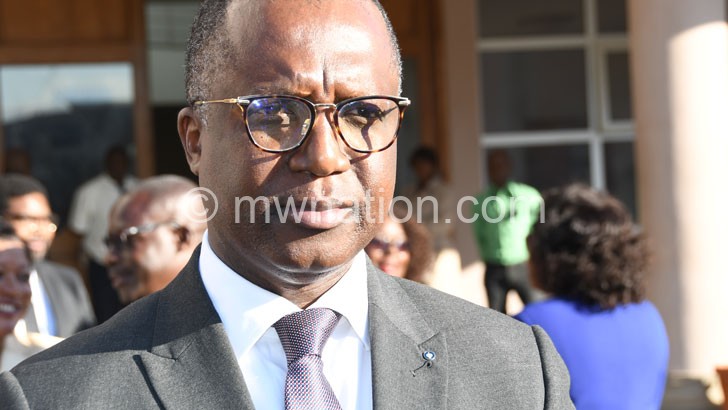Is First-Past-The-Post ideal for Malawi?
 Malawi follows the British electoral system which is based on the First-Past-The-Post (FPTP) system. With FPTP, the one who gets the highest number of votes within a constituency wins the election. Associate professor of political studies at Catholic University Nandini Patel talks to Ephraim Nyondo about how the FPTP electoral system has damaged the country’s democracy and why change is necessary.
Malawi follows the British electoral system which is based on the First-Past-The-Post (FPTP) system. With FPTP, the one who gets the highest number of votes within a constituency wins the election. Associate professor of political studies at Catholic University Nandini Patel talks to Ephraim Nyondo about how the FPTP electoral system has damaged the country’s democracy and why change is necessary.
Q: There have been discussions on the need for Malawi to rethink its First-Past-The-Post electoral system. Is this necessary?
A: The need to review the electoral system was first raised in the aftermath of 1999 elections with the opposition claiming that the president-elect did not get a majority of votes cast, as it was less than 50 percent. This was one of the reasons for challenging the results in the court. The opposition’s interpretation of majority was 50 percent plus one. The demand was in line with the Law Commission’s technical review of the Constitution, which recommended the same requirement of 50 percent plus one. This required an amendment to Section 80 (2) of the Republican Constitution because the section states that the president be elected by a majority of the electorate through universal equal suffrage. A majority in this sense is one who gets more votes. Simple and easy as it may sound, there is an inherent weakness in this system and that is; a candidate may get elected only with a small proportion of popular vote, which would mean winning the seat, but losing the vote.
Q:Don’t you think the 2009 elections where Bingu wa Mutharika got a landslide victory and a majority in Parliament solved the fears you raised?
A: The 2004 election results drew great attention to the electoral system, as the winning presidential candidate won with 35.9 percent votes. The 2009 elections for the first time saw the president winning with well over a 50 percent plus one vote. Mutharika won with 66.1 percent of votes cast, which was indeed a landslide. However, if you see the percentage of votes that DPP won for the National Assembly in 2009, it was 37.1 percent of votes but the party bagged 113 seats in the National Assembly. Needless to say, the vote-seat ratio is glaringly disproportionate.
Q: Do you have the evidence to support your claim?
A: Let us revisit the 2009 National Assembly. DPP got 113 seats with 37.8 as the percentage of the votes. Independents got 32 seats with 28.6 as the percentage of votes. MCP got 27 seats with 12.1 as the percentage votes. UDF for 17 seats with 12.0 as the percentage of votes. This clearly shows that while UDF got only 0.1 percent less votes than MCP, it got 10 seats lesser than MCP. Between the independents and DPP, the seats difference is much wider than the votes percentage. Therefore, it can be inferred that there are cases where the opposition parties and the independents won the votes, but lost the seat. Further, the number of MPs securing less than 50 percent of the constituency votes has been increasing from eight in 1994 to 19 in 1999 to 99 in 2004, and 106 in 2009. Some candidates have won a seat with a mere 22 percent of constituency vote, with a few others between 25 and 30 percent.
Q: What are the implications of having a large number of elected officials elected without a majority, or in other words, winning the seat and losing the vote and vice-versa?
A: The implications are on the very fundamentals of a democracy, namely, representation, accountability, legitimacy, inclusiveness and participation.
An electoral system reform agenda for Malawi should be based on the above indicators of democracy, and an assessment of the goals that can be achieved and the dangers that can be avoided. For instance, we need to achieve fair representation at the same time, avoiding political exclusion. Likewise, on legitimacy, we need a government that enjoys popular confidence and trust at the same time, avoiding a government elected by a minority. So too on participation, our goal should be to make every vote count in determining elections results at the same time, avoiding vote wastage.
Q: Given the complexity of the issue, what then could be an ideal electoral voting system?
A: Reflection on the principles on the one hand and the issues arising from our election results on the other, clearly establishes a need for change in the system. There is also a clear consensus on 50 percent plus one for the presidency adopting the Two Rounds System (TRS) from political parties, civil society and the people through the public submissions made to the constitutional review conference—2006/07.
Q: What is dragging the process?
A: I think lack of follow-up actions by civil society and political parties mainly the ones in the National Assembly are responsible for recommendations like this not being implemented. And again, in the National Assembly, political parties are divided. While some propose continuation of FPTP, others propose a change to Proportional Representation [List PR system]. There seems to be no clear consensus emerging from the stakeholders forums for elections to the National Assembly. A number of non-parliamentary parties indicate support to PR system as they see it as an opportunity for them to get into the National Assembly. A combination of FPTP and List PR called Mixed Member Proportional [MMP] can also be an option. But, any system change shall require the MPs to think beyond their constituency boundaries, and political parties to think beyond their electoral strongholds as there will inevitably be a change in the number and structure of constituencies. There is a compelling need for contending parties to view the electoral system issue in the light of the democratic indicators mentioned above. Robust political parties are a must for any electoral system to be effective.
Q: Any last word?
A: I wish to quote former chairperson of the Electoral Commission Justice Anastazia Msosa, who, when addressing the electoral system issue, said: “It is my hope that future election results will be widely accepted in terms of translating votes into seats, accommodating minority and marginalised groups, and dissolving regional voting patterns.”





